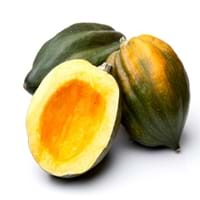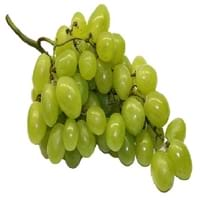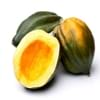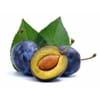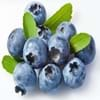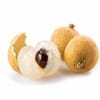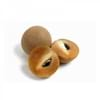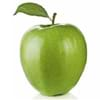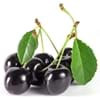Health Benefits
Anti-inflammatory properties, Arthritis treatment, Regulates Blood Sugar
Cancer prevention, Kidney stone treatment, Prevents constipation, Treatment of alzheimer's disease
General Benefits
Boosts immune system, Controls blood sugar levels, Digestive aid
Digestive aid, Improves eye vision, Maintains healthy cholesterol level, Treatment of migraine
Skin Benefits
Nourishes skin, Protects skin from oxidative stress
Anti-aging benefits, Heals sunburn, Skin rejuvenation, Treatment of dark spots
Hair Benefits
Prevents hair loss, Promotes longer and healthier hair, Regulates hair growth
Prevents hair loss, Regulates hair growth, Treatment of dandruff
Allergy Symptoms
Asthma, Red rash, Swelling of mouth, tongue or lips
Anaphylaxis, Asthma, Breathing difficulty, Coughing, Drop in blood pressure, Hives, Skin rash, Stuffy nose, Swelling of mouth, tongue or lips, Wheezing
Side Effects
Diarrhoea, Vomiting
Allergic reaction, Skin rash, Might slow down the process of blood clotting
Best Time to Eat
Along with meal, As a snack in the late afternoon, Don't eat after meal, Eat the fresh ones, avoid mixing with any other foods, don't eat after meal.
As a snack in the late afternoon, Don't consume at night and before bed, Eat the fresh ones, avoid mixing with any other foods, don't eat after meal., Morning time (before lunch)
Vitamin B5 (Pantothenic Acid)
Vitamin C (Ascorbic Acid)
Vitamin E (Tocopherole)
Not Available
Vitamin K (Phyllochinone)
Not Available
Lutein+Zeaxanthin
Not Available
Phytosterol
Not Available
Calories in Fresh Fruit with Peel
Calories in Fresh Fruit without Peel
Not Available
Not Available
Season
Winter
Autumn, Summer
Varieties
Bush Table Queen, Heirloom Table Queen, Festival Hybrid, Early Acorn Hybrid, Table Ace, Ebony and Cream of the Crop
Cabernet Sauvignon, Merlot, Pinot Noir, Syrah/Shiraz and Zinfandel
Color
Dark green, Green-yellow, Orange green
Green, Red
Inside Color
Yellow
Light Green
Taste
Sweetish
Sweet-Sour
Origin
Central America, North America, Unknown
Western Asia, Central Europe
Soil Type
Well-drained
Clay loam, Sandy loam
Climatic Conditions
Cold, Sunny
Warm
Facts about
- It was named as Acorn Squash for its resemblance to a large ribbed acorn.
- It is said that squash was being grown in Mexico as long as 10,000 years ago.
- It was the first food cultivated by native American Indians.
- If left alone, a grapevine can spread 50 feet and even more.
- There are more than 8,000 varieties of grape worldwide.
- They are available in 7 different colors: red, green, white, black, purple, blue and golden.
Other Countries
Egypt, India, Iran, Italy, Mexico, Russia, Turkey, Ukraine, United States of America
Argentina, Armenia, Australia, Chile, France, Iran, Italy, Portugal, Romania, Turkey, United States of America
Top Importer
Costa Rica
United States of America
Top Exporter
United States of America
Chile
Botanical Name
Cucurbita Pepo
Vitis vinifera
Synonym
Winter Squash
Not Available
Subkingdom
Tracheobionta
Tracheobionta
Division
Magnoliophyta
Magnoliophyta
Class
Magnoliopsida
Magnoliopsida
Subclass
Dillenhidae
Rosidae
Order
Cucurbitales
Vitales
Family
Cucurbitaceae
Vitaceae
Species
Pepo
Vitis vinifera
Generic Group
Not Available
Grape
Difference Between Acorn squash and Grape
We might think that Acorn squash and Grape are similar with respect to nutritional value and health benefits. But the nutrient content of both fruits is different. Acorn squash and Grape Facts such as their taste, shape, color, and size are also distinct. The difference between Acorn squash and Grape is explained here.
The amount of calories in 100 gm of fresh Acorn squash and Grape with peel is 40.00 kcal and 69.00 kcal and the amount of calories without peel is Not Available and Not Available respectively. Thus, Acorn squash and Grape belong to Low Calorie Fruits and Low Calorie Fruits category.These fruits might or might not differ with respect to their scientific classification. The order of Acorn squash and Grape is Cucurbitales and Vitales respectively. Acorn squash belongs to Cucurbitaceae family and Grape belongs to Vitaceae family. Acorn squash belongs to Cucurbita genus of Pepo species and Grape belongs to Vitis genus of Vitis vinifera species. Beings plants, both fruits belong to Plantae Kingdom.
